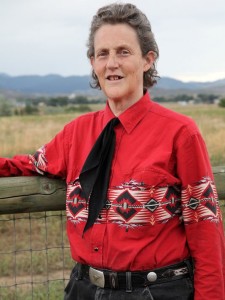UnCommon at the Core
June 2, 2016
3 uncommon learners who soared beyond expectations

In a phrase invoking one of the most contentious topics in education today, Donovan Livingston, who graduated with a Master’s degree from the Harvard School of Education on May 25th, proclaimed in his now viral commencement poem, which he performed at graduation, that “at the core, none of us were meant to be common.”
At the end of a school year fraught with friction surrounding school discipline, diversity, segregation, disproportionality, not to mention testing opt-out disputes and growing discord over state standards, Livingston’s words rang truer than any “tokens and coin phrases” so commonly employed in such circles might. His poem was sharp, quick, and cogent, cutting through the jargon-laden, bureaucratic bombast that infuses so much of our conversation concerning education, to the core of what the profession is really about. Kids.
Learning. Empowerment. Justice. Potential. Progress. Pick your passion. Livingston’s speech was a reminder to us all that education cannot be reduced to policy, personalized or project-based learning, or any number of buzzwords. In his poem, entitled “Lift Off,” Livingston made clear, education is about a lot of things, but it is most certainly about tapping into the unique potential of every person’s capacity not just to learn, but to soar “like comets darting across space and time, leaving [their] marks as [they] crash into everything.”
His cautioning against the temptation to push our students to become common rather than comets is a warning we can all head. But it is particularly potent for those of us who work in special education, where our students are anything but common, and where “normalcy” is too often the key metric for measuring success.
Livingston’s performance asks us, as special educators, to ask ourselves some tough questions: what, for instance, happens when the contours of a child’s “full potential” can’t be defined as common?; As those working in the classroom, what does it look like to help our students learn to “turn tribulations into telescopes” so they “can see their true potential from right where they stand”?; How, in an educational culture so saturated with “concepts” like accountability, quotas, and quality control, do we not respond by simply raising our “voices over the rustling of our [student’s] chains,” but instead, as Livingston suggests, “take them off, uncuff [them]”?
In the spirit of such questions, and in ode to learners who can hardly be described as common at the core, today we highlight several individuals with disabilities who were, through some combination of love, perseverance, and education awakened to the knowledge of their own (what Livingston calls) “celestial potential.” For these people with disabilities, the “sky [was] not the limit, but only the beginning.”
 Temple Grandin:
Temple Grandin: Christy Brown:
Christy Brown:
Like Temple Grandin, Christy Brown nearly spent his life in an institution. And also like Grandin, if it were not for the tenacity of his mother, he likely would have. Diagnosed with cerebral palsy not long after he was born in Dublin in 1932, his mother refused to accept the doctor’s prognosis that her son would grow to be an imbecile: “She refused to accept this truth, the inevitable truth as it then seemed that I was beyond cure, beyond saving, even beyond hope,” Brown wrote of this mother. “She could not and would not believe that I was an imbecile, as the doctors told her. She had nothing in the world to go by, not a scrap of evidence to support her conviction that, though my body was crippled, my mind was not. In spite of all the doctors and specialists told her, she would not agree. I don’t believe she knew why she just knew, without feeling the smallest shade of doubt.”
It wasn’t long before Brown began to show a keen interest in poetry and painting, and soon he had learned to both paint and write using only his left foot, thus the title of his first book, My Left Foot, an autobiographical account of his experience as a paralyzed man in the bustling city of Dublin.Again like Grandin, Brown credited not only his mother with fostering his growth and development, physically, mentally, and creatively, but also a teacher (and noted author) he met at a school/clinic he attended for a short time while of high school age, Dr.Robert Collis, who played an important role in helping Brown get his first book published. Brown went on to marry and to publish several books of poetry. And while his life ended abruptly and unhappily in 1989, his marriage and mind having deteriorated, his legacy looms large, persisting in his many books of poetry which have left an indelible mark upon 20th century Irish Literature.
 Helen Keller:
Helen Keller:
Perhaps most inspiring, however, is the oft-told story of Helen Keller. Born in 1880 in Alabama, Helen Keller fell ill at the age of 19 months and subsequently lost both her sight and her hearing. Like Grandin and Brown, Keller’s mother did everything she could to guarantee her daughter had access to the best education available at the time. Helen traveled north with her father to consult several experts. It was through a referral to Perkins’ Institute for the Blind that Keller met her teacher and would-be lifelong companion Anne Sullivan. Sullivan came to live with the Kellers, where she was eventually able to teach young Helen to read. Keller and Sullivan eventually moved north where Keller could attend school for the blind, and Keller was eventually accepted into Radcliffe College, where she became the first deaf blind woman to receive a Bachelor’s degree. Helen Keller went on to become a prominent speaker, political activist, and writer, publishing more than 12 books. She was eventually awarded the Presidential Medal of Freedom and in 1965 was elected to the National Women’s Hall of Fame at the New York World’s Fair. While well known, Helen Keller’s story continues to stand out as exemplary of the enormous capacity for learning of every human being, regardless of their disability.
Temple Grandin is of course one of the most prominent voices in the autism world and the poster-woman for what it looks like when a person with a disability exceeds all expectations. If it were not for her mother and the tireless efforts she made to ensure her daughter had access to treatment and education, Dr. Temple Grandin may very well have spent her life in an institution. Until her book Emergence: Labeled Autistic, which details her upbringing as a young woman growing up with autism was published in 1996, there was very little hope for people diagnosed with autism that they might achieve the kind of professional success, personal fulfillment, and notoriety that Dr. Grandin has proved to be possible. Among her many accomplishments, Dr. Grandin completed her PhD in animal science at the University of Illinois at Urbana-Champaign in 1989 and went on to become an esteemed professor of animal science at Colorado State University and a leading proponent for the humane treatment of livestock for slaughter. She has also been an outspoken advocate for individuals with ASD and has published several notable books on autism as well as books on the topics related to her professional research on animals. Grandin credits her mentor and high school science teacher, William Carlock with fostering her self-confidence, encouraging her to pursue her passion for animals, and for the first time, making her feel as if achieving her dreams were possible.
While grit, tenacity, and perseverance in the face of the enormous obstacles disability presents tie these three stories together, each of these exceptional individuals also have something else in common. At the core of each one of their stories are encounters–with parents and, later on with influential educators, who, as Livingston so eloquently advised us to do, played an all-important role in waking these children up to their own celestial potential. As we end the school year and head off into the summer, sending some of our own students off into the world to soar, let us not forget that as educators, we are, in a sense, the gatekeepers to freedom. Let’s not just open the gates, let’s give our students the keys.